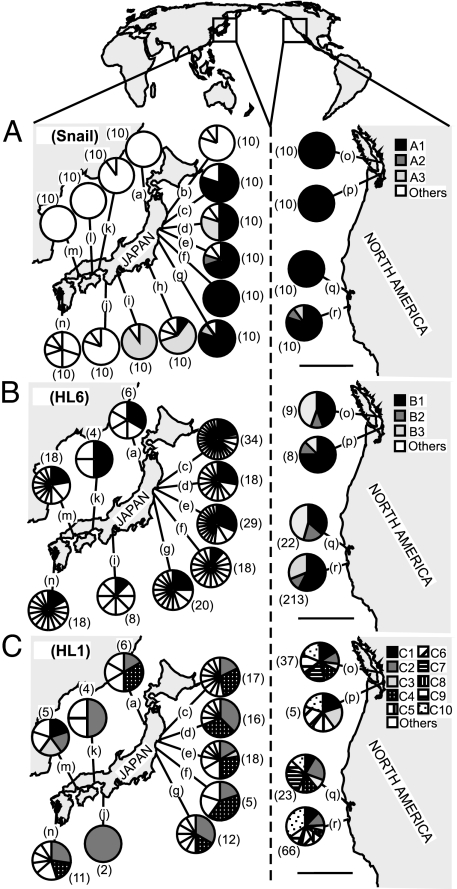Fig. 1.
The distributions of the introduced haplotypes of B. attramentaria and its parasites (HL6 and HL1) observed in the native and introduced range. (A) B. attramentaria. (B) HL6. (C) HL1. (Scale bar, 500 km.) Because there were a total of 159 haplotypes, we identify and name only those introduced from Japan to North America. Most of the haplotypes were found only in Japan and are grouped into the category “others” (which is divided to reflect the number of haplotypes in the sample). Sample size is in parentheses. Letters indicate sampling sites: (a) Toga Bay, (b) Yamada Bay, (c) Nagazura Bay, (d) Mangoku Bay, (e) Matsushima Bay, (f) Torinoumi, (g) Matsukawa Bay, (h) Obitsu River, (i) Kumode River, (j) Tanabe Bay, (k) Ibo River, (l) Kasuga River, (m) Hiroshima Bay, (n) Ariakekai, (o) Boundary Bay, (p) Padilla Bay, (q) Bolinas Lagoon, and (r) Elkhorn Slough. c–e are the oyster culturing sites in Miyagi Prefecture.

